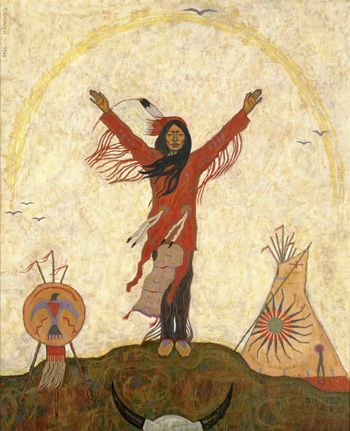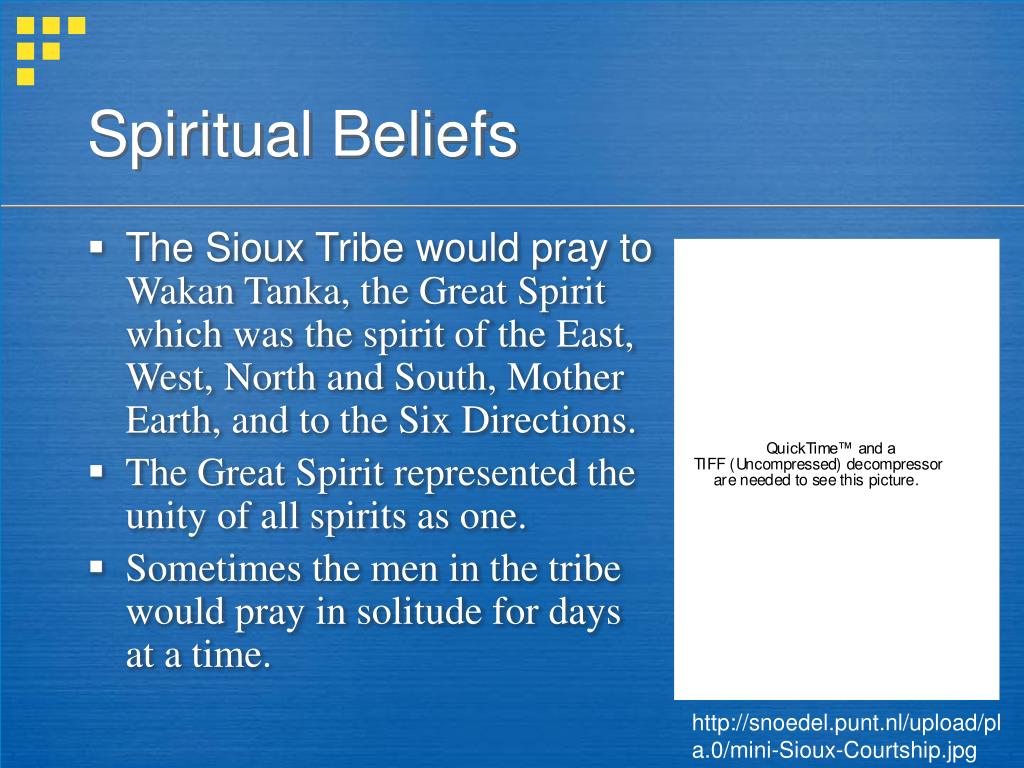
Echoes of the Sacred: Unveiling the Enduring Spirituality of the Lakota Sioux
By [Your Name/Journalist’s Name]
In the vast, undulating landscapes of the Great Plains, where the wind whispers through the grasses and the sky stretches endlessly, a profound spiritual tradition has flourished for centuries. This is the realm of the Lakota Sioux, a people whose very existence is inextricably linked to a sophisticated and deeply reverent worldview. Far from a mere set of rituals, Lakota spirituality is a living, breathing philosophy that permeates every aspect of life, offering guidance, healing, and a sense of profound interconnectedness with all creation.

At its heart lies the concept of Wakan Tanka, often translated as the "Great Mystery" or "Great Spirit." This is not a singular, anthropomorphic deity in the Western sense, but rather the pervasive, sacred essence that animates all things. Wakan Tanka is the source of all power, the unifying force that binds the seen and unseen worlds. "Wakan Tanka is everything," explains Standing Bear, a Lakota elder. "The sky, the earth, the stones, the trees, the animals, and us – we are all part of Wakan Tanka." This understanding fosters an inherent respect for every element of existence, recognizing the divine spark within all.
Flowing directly from this core belief is the ubiquitous phrase "Mitakuye Oyasin" – "All My Relations." More than just a greeting, it is a profound philosophical statement affirming the deep kinship shared with all living beings, the earth, the sky, and the spiritual world. It acknowledges a responsibility to live in harmony, recognizing that the well-being of one is intrinsically linked to the well-being of all. This holistic perspective forms the bedrock of Lakota ethics, guiding actions, decisions, and interactions within the community and with the natural world.
The spiritual journey of the Lakota is often understood through the Seven Sacred Rites, gifted to the people by the benevolent White Buffalo Calf Woman (Ptesan-Wi). According to oral tradition, she appeared to two Lakota hunters in a time of great hardship, bringing with her the sacred pipe (Chanunpa) and instructing them in the ways of prayer, peace, and the ceremonies that would sustain their people. These rites are not merely symbolic; they are transformative practices designed to purify, heal, connect with the spirit world, and ensure the well-being of the individual and the community.
Among the most prominent of these rites is the Inipi (Sweat Lodge) ceremony. Often conducted in a dome-shaped lodge covered with blankets or hides, heated stones are brought inside, and water is poured over them, creating intense steam. The Inipi is a powerful experience of purification and rebirth, symbolizing the womb of Mother Earth. Participants pray, sing, and reflect in the darkness, shedding physical and spiritual impurities. As Lakota author and activist Russell Means once described it, "The sweat lodge is a powerful ceremony that brings us back to ourselves, back to our origins, and cleanses us so we can see clearly." It is a place for healing, seeking guidance, and renewing one’s connection to Wakan Tanka.
Another cornerstone is the Hanblecheyapi (Vision Quest). This deeply personal and arduous ceremony involves an individual, often a young person transitioning into adulthood, going alone to a remote, sacred place to fast, pray, and seek a vision or message from the spirits. For days, exposed to the elements, they humble themselves before Wakan Tanka, crying for a vision that will guide their path and purpose in life. The insights gained are profoundly transformative, often leading to a new name, a sacred song, or a lifelong commitment to a particular spiritual path. It is a testament to the Lakota belief in direct communication with the spiritual realm and the importance of individual spiritual growth within the communal fabric.
Perhaps the most misunderstood, yet vital, of the Lakota ceremonies is the Wi-wanyang-wag-pi (Sun Dance). Held annually during the summer solstice, it is a four-day ceremony of sacrifice, prayer, and renewal for the entire community. Participants, known as dancers, fast and dance for extended periods, often piercing their chests or backs with skewers attached to the sacred pole in the center of the dance arena. While outsiders often focus on the physical challenge, the pain is not the goal. It is an offering, a profound sacrifice made for the well-being of their families, their people, and all creation. As Chief Arvol Looking Horse, the 19th Generation Keeper of the Sacred White Buffalo Calf Pipe, emphasizes, "The Sun Dance is a prayer for all life. It is about giving back to the Creator, offering our flesh and blood for the good of the people and the healing of the Earth." It is a powerful demonstration of selfless devotion and communal solidarity.
Central to all these ceremonies, and indeed to daily Lakota life, is the Chanunpa (Sacred Pipe). More than just an object, the pipe is a living entity, a sacred conduit between the human and spirit worlds. When the pipe is smoked, the smoke carries prayers to Wakan Tanka, and the act of sharing the pipe fosters peace, truth, and reconciliation among those who participate. Each element of the pipe holds symbolic meaning: the bowl represents the feminine earth, the stem the masculine sky, and the smoke symbolizes the breath of life and the prayers ascending. To smoke the pipe is to enter into a sacred covenant, a promise to walk in a good way.
Beyond these major rites, Lakota spirituality is woven into the fabric of daily life through oral traditions, storytelling, songs, and dances. Elders serve as vital keepers of knowledge, transmitting wisdom, history, and spiritual teachings through generations. The concept of the "Sacred Hoop" (Cangleska Wakan) represents the cyclical nature of life, the interconnectedness of all things, and the balance that must be maintained. Every direction, every season, every stage of life holds spiritual significance.

The spiritual beliefs of the Lakota have faced immense pressure and persecution. During the late 19th and early 20th centuries, the U.S. government actively suppressed Native American religious practices, banning ceremonies like the Sun Dance and the Ghost Dance, and forcing children into boarding schools where their languages and spiritual traditions were forbidden. This period of forced assimilation led to immense trauma and a fracturing of cultural identity. The infamous Wounded Knee Massacre in 1890, though a political and military event, also represented the brutal suppression of a spiritual movement, the Ghost Dance, which offered a vision of renewal and liberation.
Yet, despite these devastating efforts, Lakota spirituality endured. Passed down in secret, preserved by resilient elders, and rekindled by determined younger generations, it has seen a powerful resurgence in recent decades. The American Indian Religious Freedom Act of 1978 provided legal protection for Native religious practices, allowing ceremonies to be performed openly once more. This revival has been crucial for healing historical trauma, reaffirming identity, and empowering the Lakota people in the face of ongoing challenges.
Today, Lakota spiritual leaders continue to advocate for the protection of sacred sites, such as the Black Hills (Paha Sapa), which are considered the heart of the Lakota universe and integral to their spiritual practices. They teach the importance of environmental stewardship, recognizing the direct link between the health of the land and the spiritual well-being of the people. The wisdom embedded in "Mitakuye Oyasin" offers a powerful message for a world grappling with environmental degradation and social division.
In a globalized world often marked by materialism and disconnection, the enduring spirituality of the Lakota Sioux offers a profound alternative. It is a path of humility, respect, and deep reverence for the sacredness of all life. It reminds us that true wealth lies not in accumulation, but in connection; not in dominance, but in harmony. The echoes of their sacred traditions continue to resonate, offering ancient wisdom that is remarkably relevant for the modern age, a testament to the timeless power of living in harmony with the Great Mystery and "All My Relations."


